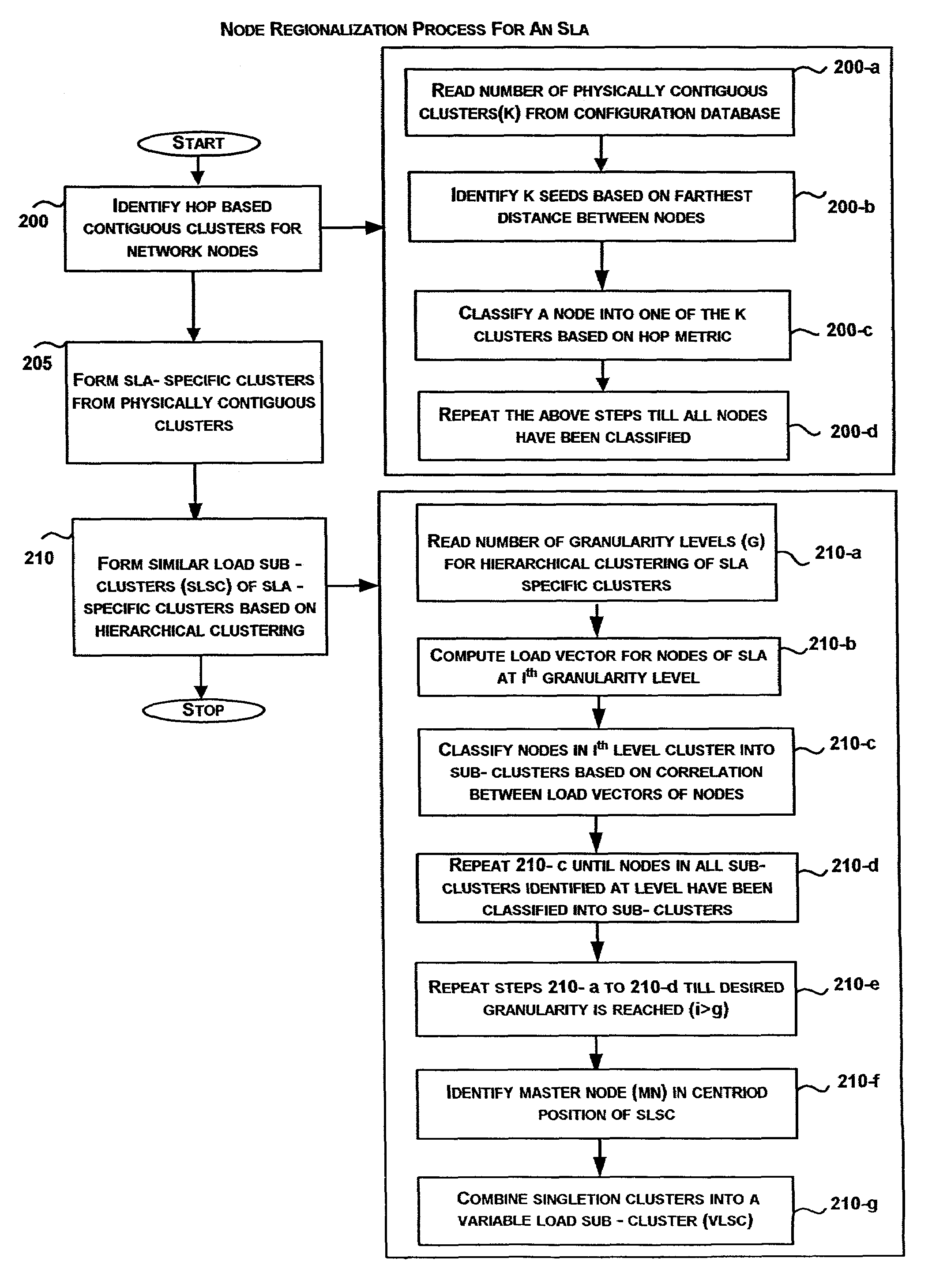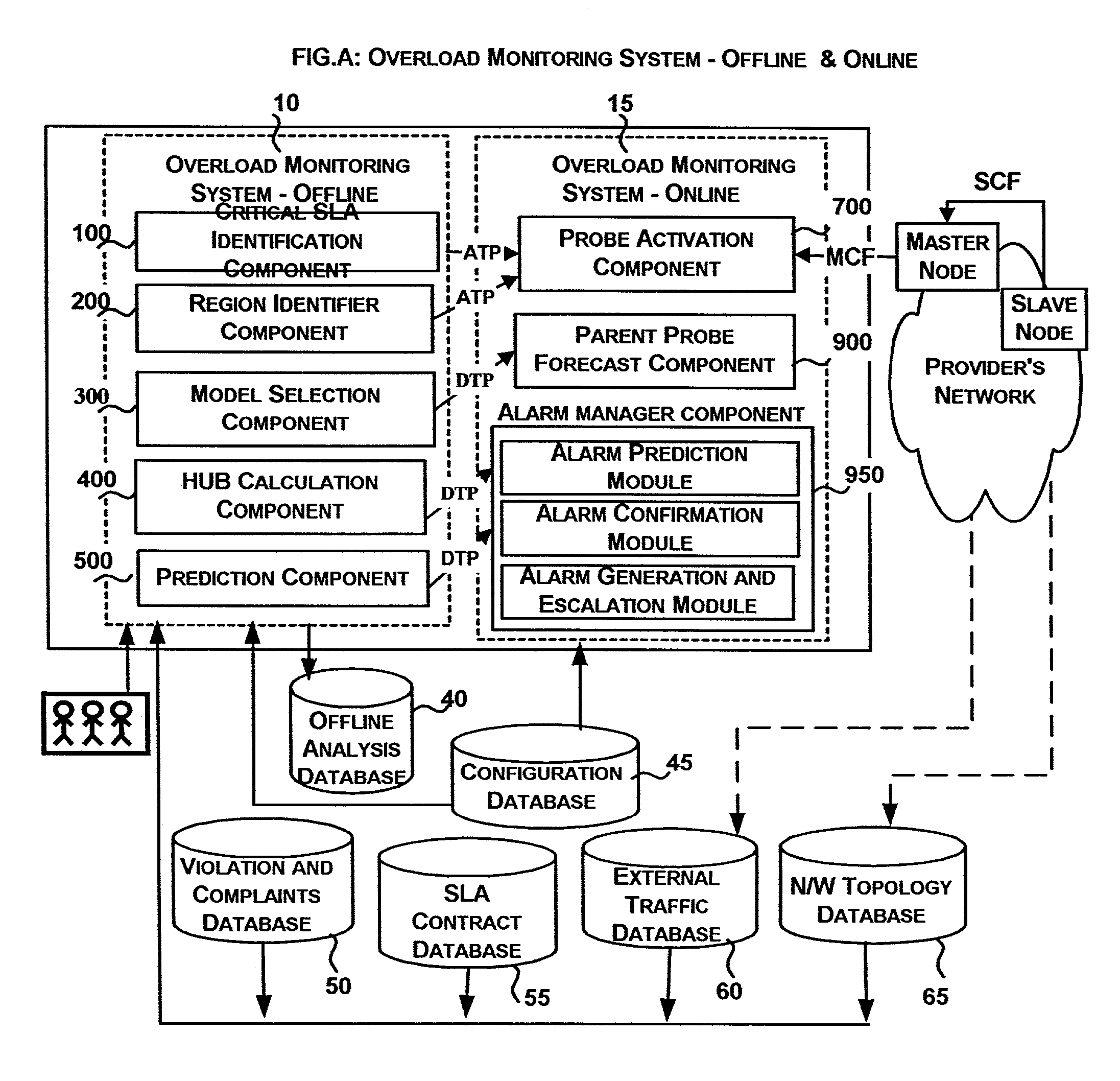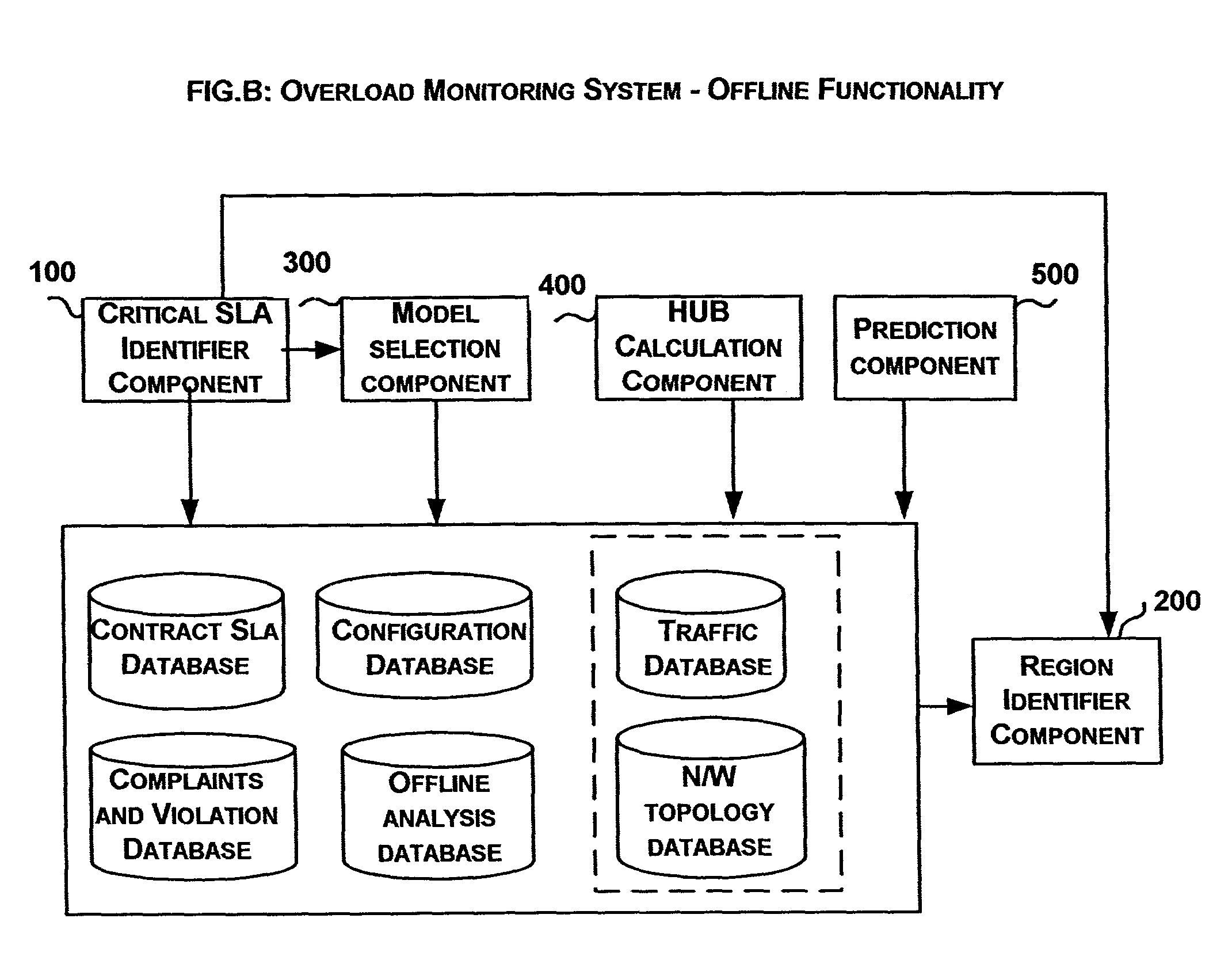System and method for static and dynamic load analyses of communication network
a communication network and dynamic load technology, applied in the field of real-time monitoring of slas, can solve problems such as network overload, and achieve the effect of reducing the data flow in the network
- Summary
- Abstract
- Description
- Claims
- Application Information
AI Technical Summary
Benefits of technology
Problems solved by technology
Method used
Image
Examples
Embodiment Construction
OMS-Offline and Online
[0065]The primary objective of the present invention is the creation of a subsystem for the offline identification and real-time monitoring of a select set of SLAs termed as critical SLAs wherein the network traffic generated by the users of a network is bound by the SLAs. FIG. A depicts the Overload Monitoring System along with Offline and Online components.
[0066]The offline components of the OverLoad Monitoring System (OMS) 10 of the present invention comprise of a Critical SLA Identification Component, HUB Calculation Component, Region Identifier Component and Forecast Model Component.
[0067]The Critical SLA Identification Component 100 of the OMS-offline of the present invention relates to the analysis of network traffic in terms of network load due to the critical SLAs. The objective of this component is to identify a reduced set of SLAs. The Critical SLA Identification Component ensures that only the adequate subset of SLAs are identified for monitoring pu...
PUM
 Login to View More
Login to View More Abstract
Description
Claims
Application Information
 Login to View More
Login to View More - R&D
- Intellectual Property
- Life Sciences
- Materials
- Tech Scout
- Unparalleled Data Quality
- Higher Quality Content
- 60% Fewer Hallucinations
Browse by: Latest US Patents, China's latest patents, Technical Efficacy Thesaurus, Application Domain, Technology Topic, Popular Technical Reports.
© 2025 PatSnap. All rights reserved.Legal|Privacy policy|Modern Slavery Act Transparency Statement|Sitemap|About US| Contact US: help@patsnap.com



